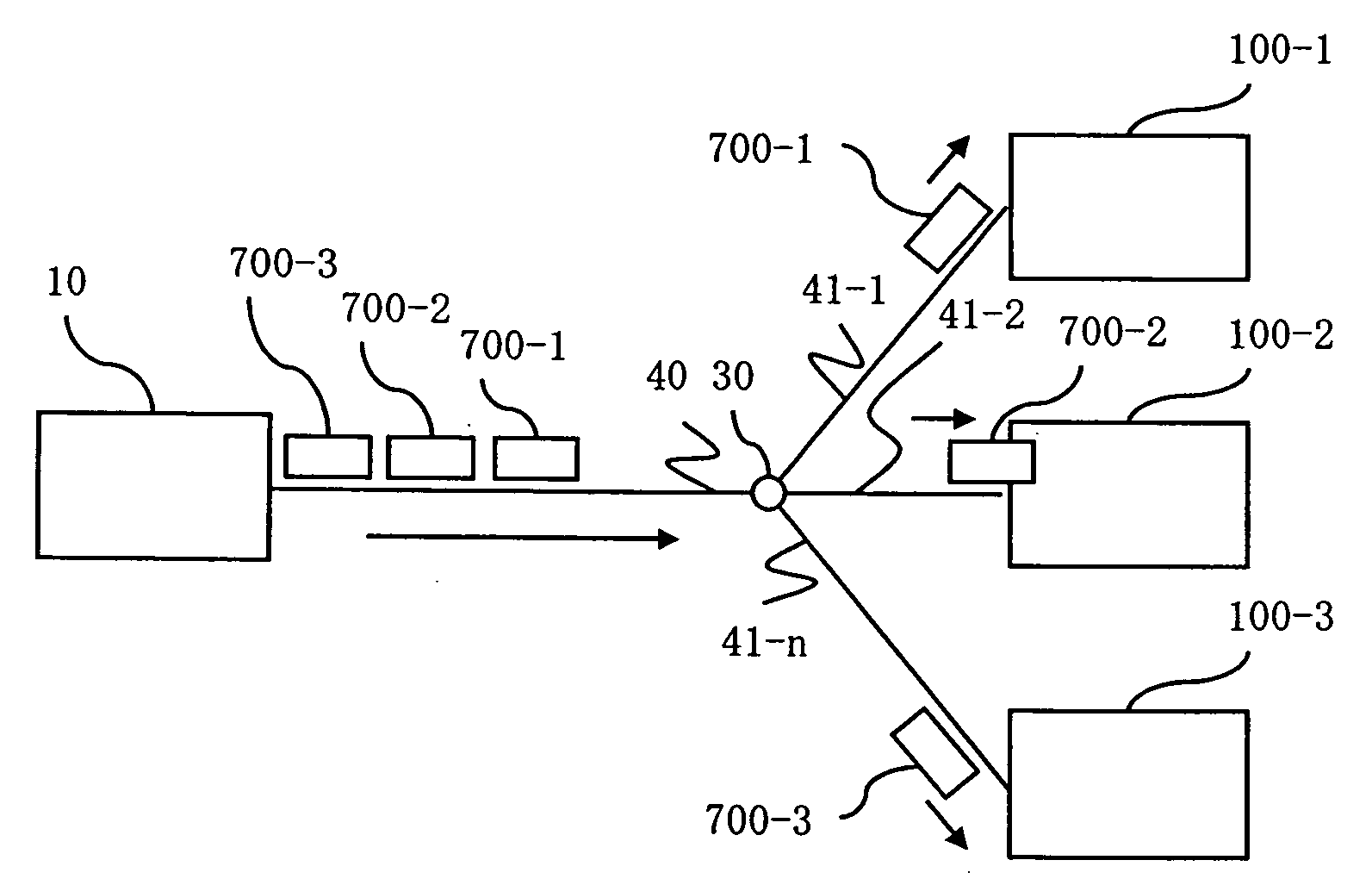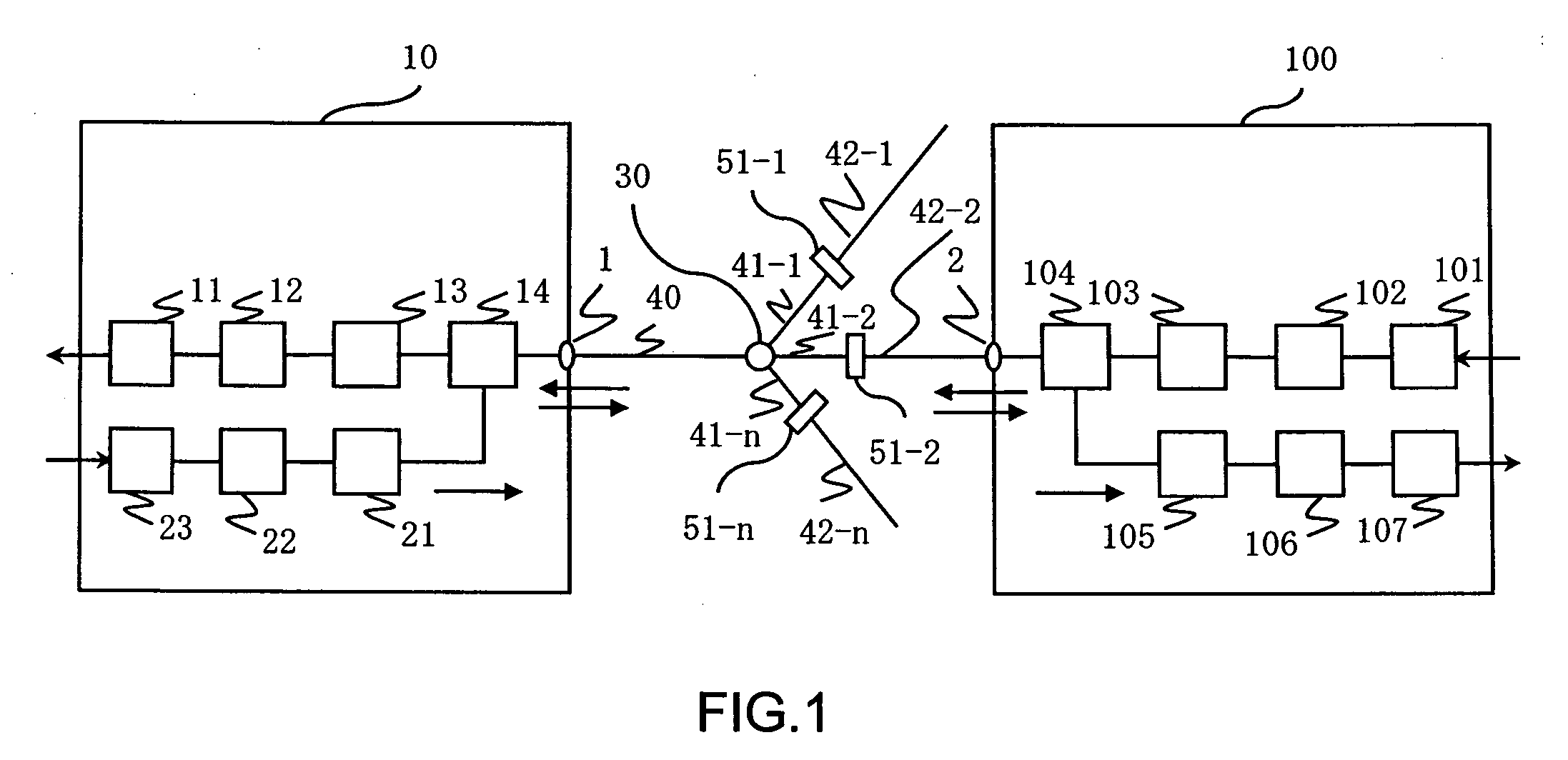[0010]With respect to the
wavelength dispersion, the
wavelength dispersion refers to a phenomenon in which lights having different wavelengths propagate inside an optical
fiber at different speeds. Since an optical spectrum of an optical signal modulated at a high-speed contains different wavelength components, the components reach a
receiver at different times while propagating an optical fiber. As a result, a waveform of an optical signal causes a
distortion after passing through a fiber. In order to suppress such waveform deterioration caused by the wavelength dispersion, there is a
dispersion compensation technology. In the
dispersion compensation technology, an optical element, which has the wavelength dispersion characteristics opposite to that of an optical fiber used in a
transmission line, is disposed in an
optical transmitter, a receiver, or a
relay or the like, thereby aiming to cancel the wavelength dispersion characteristics of the optical fiber and to prevent waveform deterioration from happening. As such an optical element, that is, a dispersion compensator, a device such as a
dispersion compensation fiber or an optical fiber
grating, which has an opposite dispersion characteristics, has been studied and attempted to be practiced. However, a dispersion compensator is very expensive to be used in the PON system, therefore it is very difficult to be adopted really. As an alternative way of not using a dispersion compensator, use of a low
chirp external modulator can be considered. A
chirp refers to a minute and dynamic wavelength variation happened when modulating an optical carrier emitted from a communication
laser in an optical
communications system. The
chirp causes a group
delay in accordance with a wavelength dispersion value of an optical
transmission line, and causes a waveform of an optical signal pulse to be distorted, resulting in the deterioration of
transmission quality. When directly modulating a
laser beam for a wavelength of, for example, 1490 nm or more which is used in the PON system, it is difficult to realize 20 km of transmission distance due to the influences of the chirp and the dispersion. Thus, it is thought that a way of adopting an EA (Electro-Absorption) modulator which uses the electro-
absorption effect of a
semiconductor is promising in this case. The reason is as follows: since the EA uses a
semiconductor material, the EA is easy to be integrated with an external modulator and a
laser together, which can reduce a cost up in comparison with a modulator used an optical
crystal having an electro-optical effect, such as LiNbO3. In fact, using such a modulator makes more expensive than a way of directly modulating a laser beam; however, the cost up factor is not a serious one, because, in the PON system, multiple subscribers share the equipment of the central office and the cost for the equipment is divided by the number of the subscribers.
[0012]It is an object of the invention is to provide an
optical communication system using an abnormal light cut-off system and an optical line terminating apparatus, in which even when a high power light is inputted from an optical fiber connected to a user side apparatus by a malicious user or an accident, a trouble rate is low, the abnormal light is
cut off at high sensitivity, and security is high.
[0039]According to the invention, it becomes possible to provide the
optical communication system using the abnormal light cut-off system and the optical line terminating apparatus, in which the
transmission quality is excellent, the trouble rate is low, the abnormal light is
cut off at high sensitivity, and the security is high.
 Login to View More
Login to View More  Login to View More
Login to View More 


